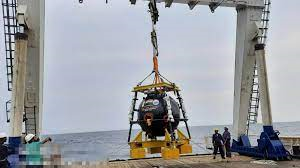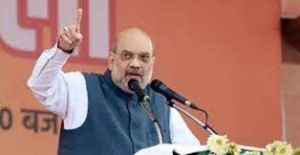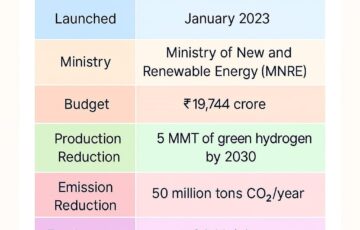Daily News Analysis.
Pradhan Mantri JI-VAN Yojana: (GS-3)
News: In a written response submitted to the Lok Sabha, the Ministry of Petroleum & Natural Gas offered insightful information regarding the Pradhan Mantri JI-VAN (Jaiv Indhan- Vatavaran Anukool fasal awashesh Nivaran) Yojana.
In March 2019, the Pradhan Mantri JI-VAN Yojana was introduced. It focuses on integrated bio-ethanol projects employing lignocellulosic biomass and other renewable feedstocks to produce Second Generation (2G) ethanol.
The total amount of money allocated is Rs. 1969.50 crore (from 2018–19 to 2023–24). The maximum financial aid allowed under this programme is Rs. 150 crore per project for commercial projects and Rs. 15 crore per project for demonstration projects, both of which are intended to increase commercial viability, encourage R&D, and encourage the adoption of technology in the area of 2G ethanol production.
Punjab, Haryana, Odisha, Assam, Karnataka, and Andhra Pradesh are the principal beneficiaries. The PM JI-VAN Yojana to Promote Bioethanol includes the following measures: Imposition of Additional Excise Duty on Non-Blended Fuels, Ethanol Purchase Agreements (EPA), Diversification of Feedstock, Separate Price for 2G Ethanol, and Reduced GST on Ethanol for EBP Program.
Biofuels:
Any fuel that is made from biomass, or plant, algae, or animal waste, is referred to as a biofuel. Contrary to fossil fuels like petroleum, coal, and natural gas, biofuel is seen as a source of renewable energy due to the ease with which such feedstock material may be supplied. In light of rising petroleum prices and growing concern about the role fossil fuels play in global warming, biofuel is frequently promoted as a convenient and environmentally friendly substitute for petroleum and other fossil fuels.
Due to the possible displacement of large tracts of arable land from food production as well as the financial and environmental expenses connected with the refining process, many critics are concerned about the extent of the spread of various biofuels.
Jharkhand Competitive Examination (Measure For Control And Prevention Of Unfair Means In Recruitment) Bill, 2023 (GS-2)
News: The Jharkhand Competitive Examination (Measure for Control and Prevention of Unfair Means in Recruitment) Bill, 2023, which enacts stringent rules to prevent cheating in competitive tests, was approved by the Jharkhand Assembly.
With this Bill, various recruitment methods will be selected fairly and transparently while maintaining the integrity of examinations. A important step towards encouraging moral behavior in competitive exams is the Jharkhand Competitive Examination Bill, 2023.
The Bill demands life in jail and fines up to Rs. 10 crore as two harsh penalties for wrongdoers. These procedures are intended to discourage people from using unethical tactics in competitive tests.
The parliamentarians’ recommendation calls for a one-year sentence instead of the three years that were previously suggested for an examinee who is detected copying for the first time.
Similar to the first offence, the penalty for a second offence has been reduced from seven years to three years. According to the Bill’s provisions, an examinee will be penalized 5 lakh if they are discovered cheating for the first time.
Nine months in prison will be added to the punishment if this fine is not paid. The examinee will receive a punishment of 10 lakh for a second offence, and if the payment is not paid, they will receive an extra thirty-month term. Any examinee found guilty will also be subject to a monetary fine and perhaps jail time, as well as a 10-year ban on taking any competitive exams.
Jharkhand
Eastern India contains the state of Jharkhand. The states of West Bengal to the east, Chhattisgarh to the west, Uttar Pradesh to the northwest, Bihar to the north, and Odisha to the south all share a boundary with the state. It covers 79,716 km2 (30,779 sq mi) of land. It is the 14th most populous and the 15th largest state in terms of area.
The state’s official language is Hindi. Its capital is Ranchi, with Dumka serving as a sub-capital. The state is renowned for its waterfalls, hills, and holy locations, including the important religious sites of Baidyanath Dham, Parasnath, Dewri, and Rajrappa.
Jharkhand is afflicted by what is frequently referred to as a resource curse: it contains more than 40% of India’s mineral riches, but 39.1% of its citizens live in poverty, and 19.6% of its youngest residents are underweight.[14] The majority of the people in Jharkhand live in rural areas, and only 24% of them reside in cities. When it comes to economic growth, it is one of the top states. Statewide GDP growth for the years 2017–18 was 10.22%.
City Investments To Innovate, Integrate And Sustain 2.0 (GS-2)
News: ‘City Investments to Innovate, Integrate and Sustain 2.0 (CITIIS 2.0)’ has received government approval.
As part of the Smart Cities Mission, CITIIS 2.0 seeks to advance integrated waste management and climate-focused reform initiatives.
The following four categories are where CITIIS will take into account smart city projects:
Adaptive Mobility.
Open Public Spaces.
ICT and urban e-governance.
Organizational and Social Innovation for Low-Income Communities.
The program will continue from 2023 to 2027, or for a total of four years.
With a focus on integrated waste management at the city level, climate-focused reform initiatives at the state level, institutional improvement, and knowledge dissemination at the national level, the program aims to fund projects that promote the circular economy.
The goal of CITIIS 2.0 is to build on and scale up the successes and lessons learned from CITIIS 1.0. Three parts of CITIIS 1.0 were jointly released in 2018, and they were as follows:
- 12 local initiatives were chosen in a competitive procedure.
- Actions aimed at building capacity in the state of Odisha.
The National Institute of Urban Affairs (NIUA), which served as the Programme Management Unit (PMU) for CITIIS 1.0, is promoting integrated urban management at the federal level.
Smart City Mission
The Hon. Prime Minister introduced the Smart Cities Mission on June 25, 2015. Through the use of “smart solutions,” the Mission’s primary goal is to encourage the development of cities that offer basic services, a healthy environment, and decent quality of life for their residents.
Through extensive work on the social, economic, physical, and institutional foundations of the city, The Mission seeks to promote economic growth and enhance quality of life. The goal is to create reproducible models that serve as beacons for other aspirant cities, with an emphasis on sustainable and inclusive development. A two-stage competition resulted in the selection of 100 localities to be developed as Smart localities.
Operating as a Centrally Sponsored Scheme, the Mission. Over the course of five years, the Central Government will provide financial support of Rs. 48,000 crores, or on average Rs. 100 crore per city, every year. The State/ULB shall contribute an equal amount on a matching basis. Through convergence, additional funds will be obtained through ULBs’ own funds, grants from the Finance Commission, creative financing methods including municipal bonds, other government programs and borrowings.
The importance of private sector involvement through Public Private Partnerships (PPP) has been highlighted. The selected cities’ Smart City Proposals (SCPs) were created with the aspirations of the citizens in mind. These proposals included more than 5,000 projects totaling more than Rs. 2,000,000 crores when taken as a whole, of which 45 percent will be supported by Mission funds, 21 percent by convergence, 21 percent by PPP, and the other 70 percent by other sources.
Samudrayaan Project : First Mission To Explore Ocean (GS-3)
News: According to recent statements made by the Union Minister of Earth Sciences, three people will be sent in a submersible to a depth of 6000 metres as part of India’s ambitious Samudrayaan programme.
India’s first manned expedition to investigate the deep ocean is the Samudrayaan Project. It is intended to research deep ocean resources and carry out biodiversity analyses.
Since the submersible would only be used for exploration, the expedition won’t cause any harm to the ecosystem. The initiative is a component of the wider Deep Ocean Mission, which promotes the Blue Economy agenda of the Central Government.
The nodal ministry for carrying out this ambitious multi-institutional effort is the Ministry of Earth Sciences (MoES). A manned submersible called MATSYA 6000 was created by the National Institute of Ocean Technology (NIOT), Chennai.
It was created as part of the Samudrayaan project to make it easier for people to explore mineral riches in the deep ocean. It is built to be able to function in the deep water for 12 hours, and in an emergency, it can also function for up to 96 hours while taking all essential precautions to ensure human safety.
It is anticipated to launch in 2024 or 2025, making India just one of six nations—along with the United States, Russia, Japan, France, and China—to have led a crewed under-sea mission above 5,000 metres.
Ministry of Earth Sciences
The Government of India has entrusted the Ministry of Earth Sciences (MoES) with the responsibility of providing services for weather, climate, ocean and coastal state, hydrology, seismology, and natural hazards; exploring and utilising marine living and non-living resources for the nation; and exploring the three poles of the Earth (the Arctic, Antarctic, and Himalayas).
The Department of Ocean Development (DOD), which is now known as MoES, was first established in July 1981 as a division of the Cabinet Secretariat and is now directly under the control of the Prime Minister of India. In March 1982, it was established as a separate department. The former DOD served as a nodal organisation for planning, directing, and promoting national ocean development initiatives. In February 2006, the Indian government designated DOD as the Ministry of Ocean Development.
Sahakar 22 : National Cooperative Development Corporation (GS-3)
News: In the previous fiscal year (FY) 2017–18, the National Cooperative Development Corporation had introduced its own programme, Sahakar–22.
NCDC’s effort Sahakar 22 included the following:
FOCUS 222 is NCDC’s targeted assistance program for cooperatives in 222 Districts, including 117 Districts with high aspirations that NITI Aayog has selected;
PACS HUB – The transformation of PACS and other cooperatives into Apna Kisan Resource Centres; AENEC – Act East and North East Cooperatives; CEMtC – Centres of Excellence to Market through Cooperatives; SAHAKAR PRAGYA – Capacity Development through Laxmanrao Inamdar National Academy for Cooperative Research Development (LINAC).
NCDC:
In 1963, a parliamentary act created the National Cooperative Development Corporation (NCDC) as a statutory corporation. The Ministry of Cooperation is the nodal ministry. Planning, promoting, and funding program for the production, processing, marketing, storage, export, and import of agricultural products, food, and certain other listed commodities, such as fertilizers, insecticides, agricultural machinery, lac, soap, kerosene oil, textiles, and rubber, among others, are among their functions.
As well as income-generating streams of industries including poultry, dairy, fishery, sericulture, handloom, etc., cooperatives also supply consumer goods and gather, process, market, store, and export minor forest produce.
National Cooperative Development Corporation:
- In 1963, an act of parliament created the National Cooperative Development Corporation (NCDC) as a statutory corporation under the Ministry of Cooperation.
- Planning, promoting, and funding programmes for the production of agricultural products, food products, certain other notified commodities, such as fertilisers, insecticides, agricultural machinery, lac, soap, kerosene oil, textile, rubber, etc., supply of consumer goods, and collection, processing, marketing, storage, and export of minor forest produce through cooperatives, in addition to income-generating streams of activities like poultry farming
- The NCDC Act has also been revised, which would broaden the Corporation’s operational region, support more varieties of cooperatives, and strengthen its financial foundation. The NCDC will now be able to provide funding for projects in the rural industrial cooperative sectors and for specific services in rural areas that have been approved, such as water conservation, irrigation, micro irrigation, agri-insurance, agro-credit, rural sanitation, animal health, etc.
- Grants and loans are granted to state governments for the funding of cooperative societies at the primary and secondary levels, as well as directly to the national level and other societies with objectives that go beyond a single state. Now that the necessary requirements have been met, the Corporation can also pursue direct funding of projects under its different assistance schemes.









